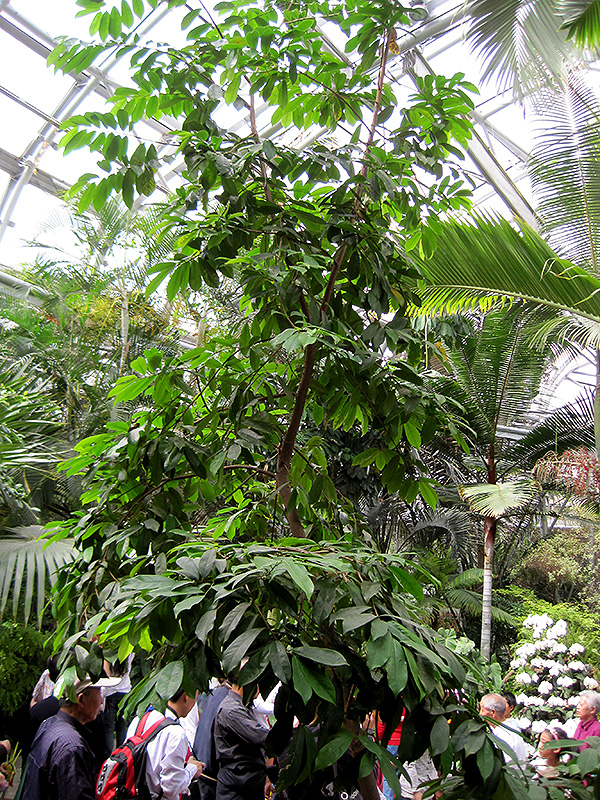Height: 25 feet
Spread: 10 feet
Sunlight:
![]()
Hardiness Zone: 10b
Other Names: Soursop, Graviola
Description:
These trees are generally bushy and low but can be pruned to shape; large oval to elliptical glossy leaves are beautiful and provide shade; cone shaped flowers can appear anywhere on the trunk or branches; fruit is edible but seeds are poisonous
Ornamental Features
Prickly Custard Apple is primarily grown for its highly ornamental fruit. The fruits are showy chartreuse pomes carried in abundance from mid to late summer. The fruit can be messy if allowed to drop on the lawn or walkways, and may require occasional clean-up. It has attractive dark green foliage with light green undersides. The glossy oval leaves are highly ornamental and remain dark green throughout the winter. It features unusual chartreuse hooded flowers with yellow eyes along the branches from late winter to early spring.
Landscape Attributes
Prickly Custard Apple is an evergreen tree with an upright spreading habit of growth. Its average texture blends into the landscape, but can be balanced by one or two finer or coarser trees or shrubs for an effective composition.
This is a relatively low maintenance tree, and should only be pruned after flowering to avoid removing any of the current season's flowers. It has no significant negative characteristics.
Prickly Custard Apple is recommended for the following landscape applications;
- Accent
- Shade
Planting & Growing
Prickly Custard Apple will grow to be about 25 feet tall at maturity, with a spread of 10 feet. It has a low canopy with a typical clearance of 2 feet from the ground, and is suitable for planting under power lines. It grows at a medium rate, and under ideal conditions can be expected to live for 40 years or more.
This tree should only be grown in full sunlight. It prefers to grow in average to moist conditions, and shouldn't be allowed to dry out. It may require supplemental watering during periods of drought or extended heat. It is not particular as to soil type or pH. It is somewhat tolerant of urban pollution. This species is not originally from North America, and parts of it are known to be toxic to humans and animals, so care should be exercised in planting it around children and pets.
Disclaimer - This Plant Finder tool is an online resource representing many of the varieties that we carry over the course of the season, and is intended for informational purposes only. Inventory varies seasonally, so we cannot guarantee that every plant will be in stock at all times - please contact the store directly for current availability. It does not include our entire selection of plants, so be sure to visit our store to see varieties that may not be represented on this list.

